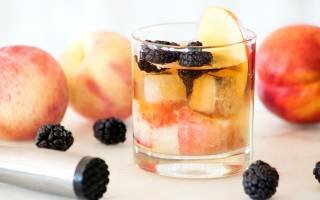Коктейль New Fashioned Нью фешн
New Old-Fashioned Cocktail
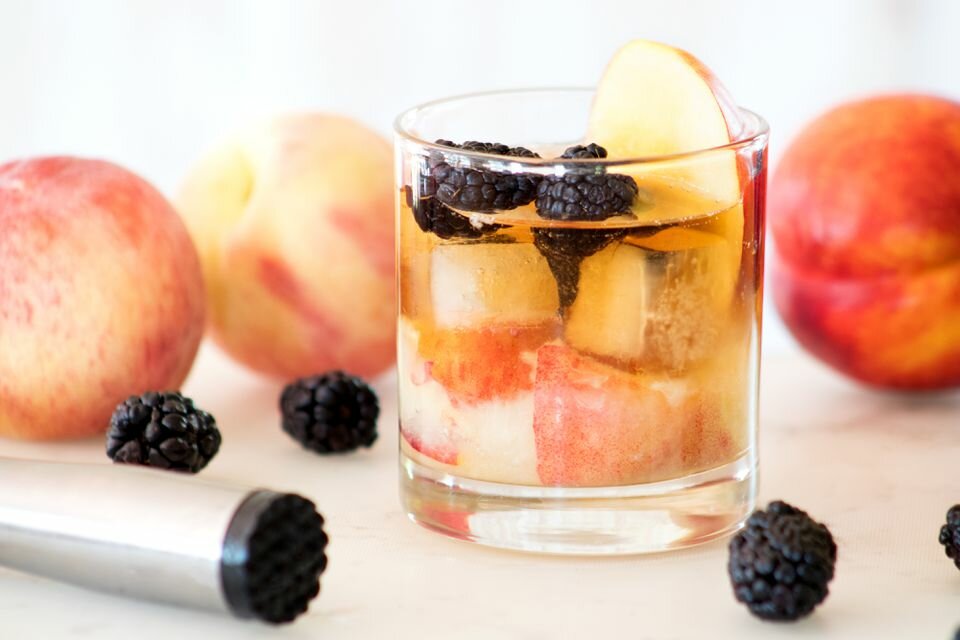
- Total: 3 mins
- Prep: 3 mins
- Cook: 0 mins
- Yield: 1 cocktail (1 serving)
Peach and bourbon are a fantastic pairing, and the two come together in a magical way in the new old-fashioned recipe. It puts a fresh summer fruit twist on the old-fashioned, one of the best bourbon cocktails of all time. The recipe is simple, so anyone can make it at home.
The beauty of popular «stick» drinks like the old-fashioned, mojito, and caipirinha is that the base is an inspiration for a great variety of drinks. By simply switching out the muddled fruit, an entirely different cocktail is born. That is the case with this recipe from Woodford Reserve, in which the old-fashioned’s orange and cherry are swapped out for peach and blackberry. The two summer fruits make the new old-fashioned an ideal warm weather drink to enjoy on the patio with a few good friends.
Ingredients
- 1 tablespoon simple syrup
- 5 dashes of bitters
- 2 peach slices
- 2 1/2 ounces bourbon (Woodford Reserve)
- 2 blackberries
- Splash sparkling water
Steps to Make It
Gather the ingredients.
In an old-fashioned glass, combine the simple syrup, bitters, and one peach slice. Muddle well to mix the ingredients and mash the fruit for its juice.
Add the bourbon and fill the glass with ice cubes.
Add the second peach slice, the blackberries, and sparkling water. Stir to combine.
Serve and enjoy!
- Use the new old-fashioned to explore all the peach varieties that fill the produce markets during the fruit’s seasonal peak in summer. Each will give the drink a slightly different flavor.
- The «sparkling water» is open for interpretation. Sparkling water, soda, mineral water, even club soda; there are many options for the soda in this cocktail. Essentially, if it’s clear and sparkling, it will work in the recipe.
- Don’t rule out ginger ale or lemon-lime soda, either. These will add an extra hint of sweetness to the mix.
Recipe Variations
Use this recipe as inspiration for your own seasonal twists on the old-fashioned. As the seasons change, pick up any fruit you see at the market, then muddle it up and add whiskey. The possibilities are endless and there are some very fun flavor combinations to explore.
- In the fall, use apple cider, brown sugar, and sage as seen in the old-fashioned 101 recipe.
- As winter hits, toss a few pomegranate arils and cranberries with cinnamon syrup in the glass. And, come January, try kumquats and ginger before the tiny citrus fruits disappear.
- Spring’s a time for rhubarb, so make a syrup from the vegetable and muddle it with rosemary.
How Strong Is a New Old-Fashioned?
There is very little added to this cocktail’s volume that will bring it down from the bottling strength of the whiskey. Ice and a touch of soda do help a bit, but the new old-fashioned is not much different than drinking whiskey on the rocks. At an alcohol content of around 30 percent ABV (60 proof), you will certainly want to relish every moment of this drink.
Fall’s Biggest Cocktail Trend? Back to Basics
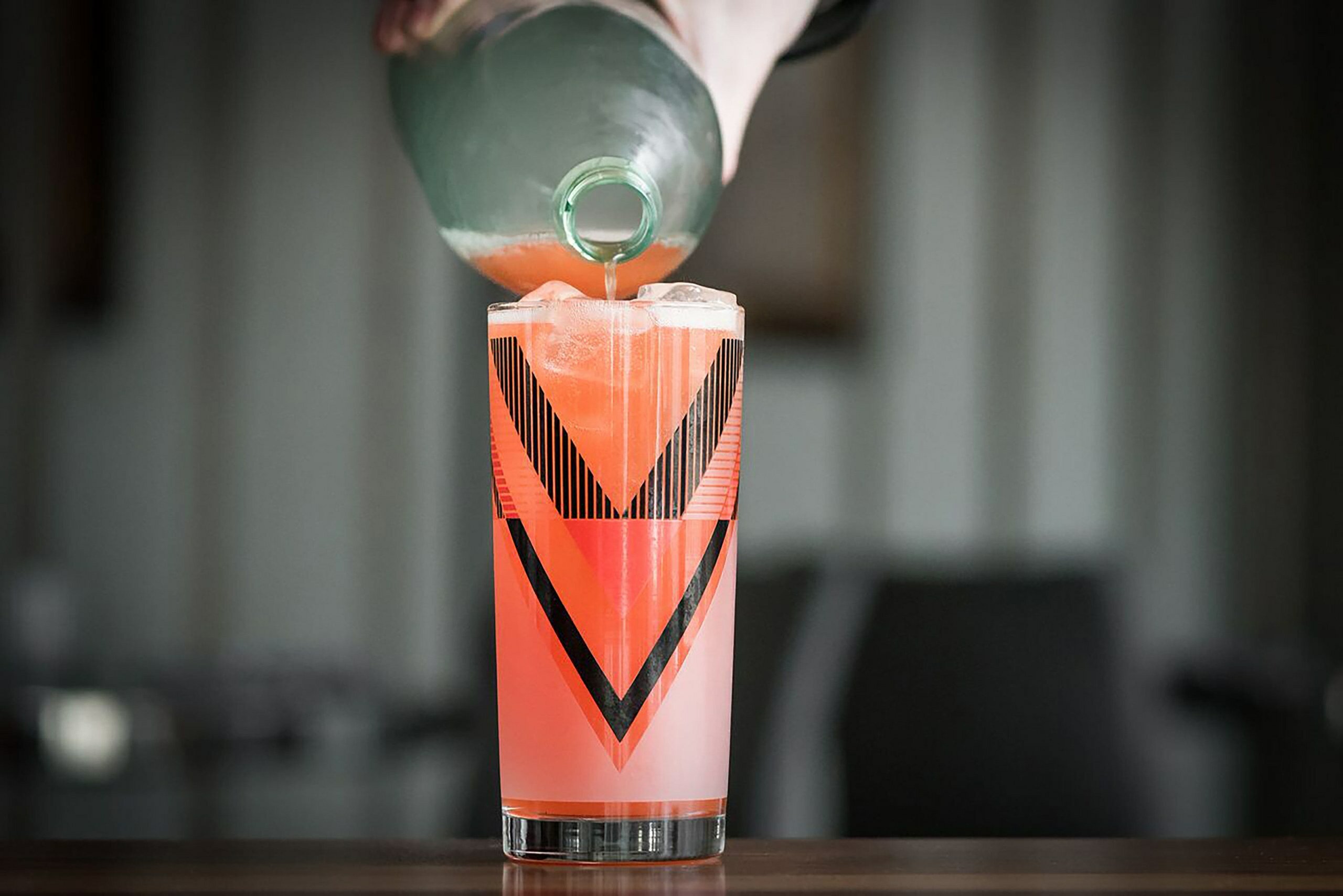
There’s no denying the excitement of posting up at The Aviary in Chicago for a cutting edge, futuristic cocktail experience. The drinks are capable of bringing sheer satisfaction to the table by way of stellar ingredients and interactive components (aka glass portholes and ice spheres and slingshots). Wow-factor cocktails will always be sought after—for obvious reasons—but as of late, bartenders and mixologists are prevailing with simple, no frills cocktails. New education and a bevy of quality spirits brands are disrupting the market, making consumers think twice about what’s actually in their glass.
Essentially, cocktails are going through a “makeunder” revolution. “Cocktails going back to a simpler form can be attributed to the growth of the movement itself,” says Jon Howard, head bartender at Henley in Nashville, a modern American brasserie nestled inside the brand new Kimpton Aertson Hotel. «The days of specialized bars for cocktails is dwindling and people are expecting good drinks at most, if not all, restaurants, clubs, and bars. With that expectation, I feel there is less pressure to do something outlandish and more emphasis growing on efficiency and guest satisfaction—and at the end of the day people want to feel taken care of, not alienated.”
Some simple cocktails like the old-fashioned, the martini, and the cosmopolitan are making a comeback after becoming famous on shows such as Mad Men and Sex and the City. “Among bartenders we are finding the beauty in these simple drinks again,» Howard says. “With people like Naren Young at Dante [in New York City] and Jacques Bezuidenhout at Wildhawk [in San Francisco] taking drinks like the martini and championing them we are getting further education on the idea of beauty in simplicity—plus I think people enjoy the idea of looking like Roger Sterling from Mad Men.»
Bob Peters, mixologist at The Punch Room, at the Ritz-Carlton, Charlotte, will be the first to tell you that while his cocktails look extra fancy, he typically leans towards fewer ingredients. “Editing recipes down to truly showcase just a couple beautiful ingredients is the cocktail equivalent of an acoustic set from your favorite band—there are no distractions, just purity and clarity of flavor,” Peters says. “I think the trend of simple cocktails is a natural swing of the pendulum that travels back and forth many times when you look at the big picture. I think that a part of progress sometimes is simplifying things.”
While the spirits industry has boomed drastically over the past decade, not all products are created equal. In the past, a number of ingredients were used in a cocktail to hide the taste of a spirit. “There was a time in our history where the alcohol we created was completely unpalatable and we needed to ‘cover it,’ if you will,» says Azrhiel Frost of Chicago’s Baptiste & Bottle. “We have educated ourselves, we’ve experimented, and we’ve discovered better-quality ways of producing beautifully distilled products that speak for themselves—that don’t need to be covered with anything.”
Consumers today are also becoming more educated; the same people who want to know the farm-origin of their meat also want to know how their spirits are made. “With that comes a demand for better product and more of it,” Howard says. “The shift towards fewer ingredients is greatly aided by this and now people want to taste the base spirit within cocktails,” prompting the experts behind bars to push the envelope. “Now that consumers don’t just want a drink where you can’t taste the alcohol, we are able to let the flavors found within the base spirit shine and do things to bring the flavor of the spirit forward or complement it—not cover it up.”
“I’ve personally observed an inundation of the over complication of a cocktail,” Frost says. The reality is, “you can just put gin and vermouth in a glass and it will taste amazing.” It’s more about quality over quantity nowadays, too, and bartenders actually caring about what goes in to consumers’ drinks. In Greenville, South Carolina, Crafted at Nose Dive’s head mixologist Walker Pickering notes that “a cocktail is lot like a relationship—the less complicated it is, the more enjoyable it will be.” Lately, he’s been focusing on using oils of fruit rinds instead of juice, which elevate drinks with flavor and smell simultaneously, while eliminating the need for an extra liquefied ingredient. Plus, the end result is a fresh, aromatic taste.
Fall’s Biggest Cocktail Trend? Back to Basics
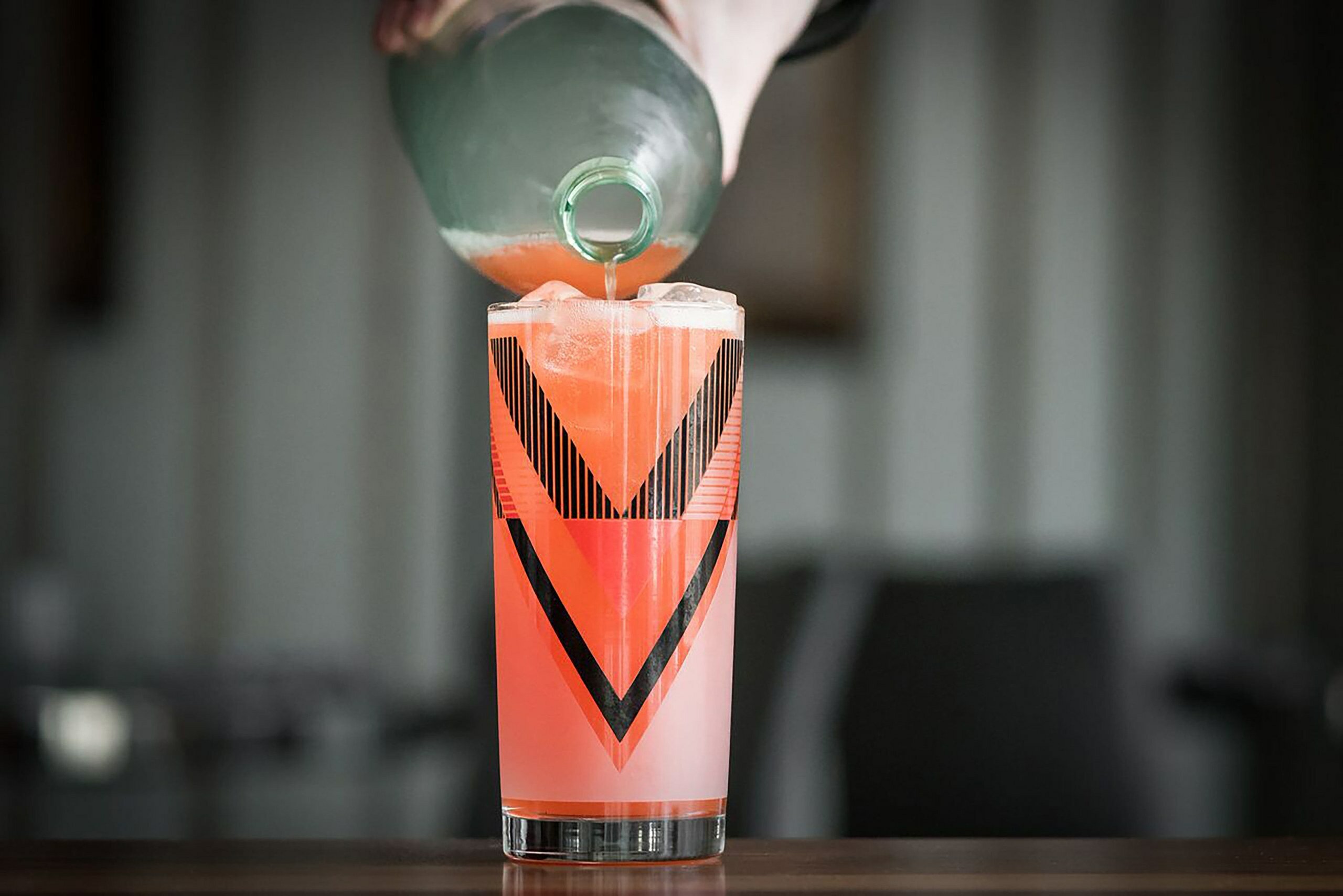
There’s no denying the excitement of posting up at The Aviary in Chicago for a cutting edge, futuristic cocktail experience. The drinks are capable of bringing sheer satisfaction to the table by way of stellar ingredients and interactive components (aka glass portholes and ice spheres and slingshots). Wow-factor cocktails will always be sought after—for obvious reasons—but as of late, bartenders and mixologists are prevailing with simple, no frills cocktails. New education and a bevy of quality spirits brands are disrupting the market, making consumers think twice about what’s actually in their glass.
Essentially, cocktails are going through a “makeunder” revolution. “Cocktails going back to a simpler form can be attributed to the growth of the movement itself,” says Jon Howard, head bartender at Henley in Nashville, a modern American brasserie nestled inside the brand new Kimpton Aertson Hotel. «The days of specialized bars for cocktails is dwindling and people are expecting good drinks at most, if not all, restaurants, clubs, and bars. With that expectation, I feel there is less pressure to do something outlandish and more emphasis growing on efficiency and guest satisfaction—and at the end of the day people want to feel taken care of, not alienated.”
Some simple cocktails like the old-fashioned, the martini, and the cosmopolitan are making a comeback after becoming famous on shows such as Mad Men and Sex and the City. “Among bartenders we are finding the beauty in these simple drinks again,» Howard says. “With people like Naren Young at Dante [in New York City] and Jacques Bezuidenhout at Wildhawk [in San Francisco] taking drinks like the martini and championing them we are getting further education on the idea of beauty in simplicity—plus I think people enjoy the idea of looking like Roger Sterling from Mad Men.»
Bob Peters, mixologist at The Punch Room, at the Ritz-Carlton, Charlotte, will be the first to tell you that while his cocktails look extra fancy, he typically leans towards fewer ingredients. “Editing recipes down to truly showcase just a couple beautiful ingredients is the cocktail equivalent of an acoustic set from your favorite band—there are no distractions, just purity and clarity of flavor,” Peters says. “I think the trend of simple cocktails is a natural swing of the pendulum that travels back and forth many times when you look at the big picture. I think that a part of progress sometimes is simplifying things.”
While the spirits industry has boomed drastically over the past decade, not all products are created equal. In the past, a number of ingredients were used in a cocktail to hide the taste of a spirit. “There was a time in our history where the alcohol we created was completely unpalatable and we needed to ‘cover it,’ if you will,» says Azrhiel Frost of Chicago’s Baptiste & Bottle. “We have educated ourselves, we’ve experimented, and we’ve discovered better-quality ways of producing beautifully distilled products that speak for themselves—that don’t need to be covered with anything.”
Consumers today are also becoming more educated; the same people who want to know the farm-origin of their meat also want to know how their spirits are made. “With that comes a demand for better product and more of it,” Howard says. “The shift towards fewer ingredients is greatly aided by this and now people want to taste the base spirit within cocktails,” prompting the experts behind bars to push the envelope. “Now that consumers don’t just want a drink where you can’t taste the alcohol, we are able to let the flavors found within the base spirit shine and do things to bring the flavor of the spirit forward or complement it—not cover it up.”
“I’ve personally observed an inundation of the over complication of a cocktail,” Frost says. The reality is, “you can just put gin and vermouth in a glass and it will taste amazing.” It’s more about quality over quantity nowadays, too, and bartenders actually caring about what goes in to consumers’ drinks. In Greenville, South Carolina, Crafted at Nose Dive’s head mixologist Walker Pickering notes that “a cocktail is lot like a relationship—the less complicated it is, the more enjoyable it will be.” Lately, he’s been focusing on using oils of fruit rinds instead of juice, which elevate drinks with flavor and smell simultaneously, while eliminating the need for an extra liquefied ingredient. Plus, the end result is a fresh, aromatic taste.
New Old-Fashioned Cocktail
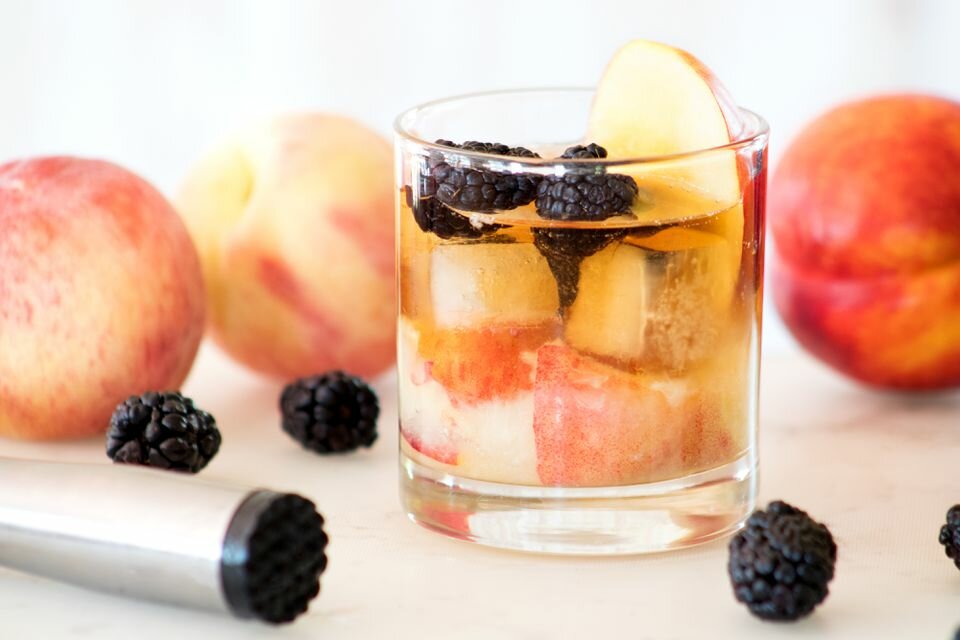
- Total: 3 mins
- Prep: 3 mins
- Cook: 0 mins
- Yield: 1 cocktail (1 serving)
Peach and bourbon are a fantastic pairing, and the two come together in a magical way in the new old-fashioned recipe. It puts a fresh summer fruit twist on the old-fashioned, one of the best bourbon cocktails of all time. The recipe is simple, so anyone can make it at home.
The beauty of popular «stick» drinks like the old-fashioned, mojito, and caipirinha is that the base is an inspiration for a great variety of drinks. By simply switching out the muddled fruit, an entirely different cocktail is born. That is the case with this recipe from Woodford Reserve, in which the old-fashioned’s orange and cherry are swapped out for peach and blackberry. The two summer fruits make the new old-fashioned an ideal warm weather drink to enjoy on the patio with a few good friends.
Ingredients
- 1 tablespoon simple syrup
- 5 dashes of bitters
- 2 peach slices
- 2 1/2 ounces bourbon (Woodford Reserve)
- 2 blackberries
- Splash sparkling water
Steps to Make It
Gather the ingredients.
In an old-fashioned glass, combine the simple syrup, bitters, and one peach slice. Muddle well to mix the ingredients and mash the fruit for its juice.
Add the bourbon and fill the glass with ice cubes.
Add the second peach slice, the blackberries, and sparkling water. Stir to combine.
Serve and enjoy!
- Use the new old-fashioned to explore all the peach varieties that fill the produce markets during the fruit’s seasonal peak in summer. Each will give the drink a slightly different flavor.
- The «sparkling water» is open for interpretation. Sparkling water, soda, mineral water, even club soda; there are many options for the soda in this cocktail. Essentially, if it’s clear and sparkling, it will work in the recipe.
- Don’t rule out ginger ale or lemon-lime soda, either. These will add an extra hint of sweetness to the mix.
Recipe Variations
Use this recipe as inspiration for your own seasonal twists on the old-fashioned. As the seasons change, pick up any fruit you see at the market, then muddle it up and add whiskey. The possibilities are endless and there are some very fun flavor combinations to explore.
- In the fall, use apple cider, brown sugar, and sage as seen in the old-fashioned 101 recipe.
- As winter hits, toss a few pomegranate arils and cranberries with cinnamon syrup in the glass. And, come January, try kumquats and ginger before the tiny citrus fruits disappear.
- Spring’s a time for rhubarb, so make a syrup from the vegetable and muddle it with rosemary.
How Strong Is a New Old-Fashioned?
There is very little added to this cocktail’s volume that will bring it down from the bottling strength of the whiskey. Ice and a touch of soda do help a bit, but the new old-fashioned is not much different than drinking whiskey on the rocks. At an alcohol content of around 30 percent ABV (60 proof), you will certainly want to relish every moment of this drink.


